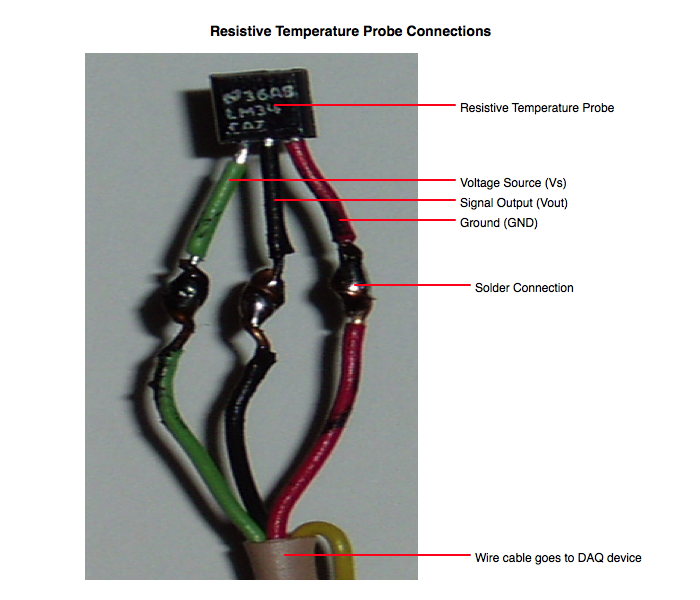
Strip Chart ► Tutorials ► Temperature
This experiment shows how to hook up a sensor to the DAQ device to measure heat. The sensor is diagrammed below and was purchased at Digi-Key with part number LM34CAZ-ND. Type that part number in the search field to get the order information. Then click the Technical/Catalog Information link to download the data sheet in PDF format. Once you buy the sensor solder wires to it as shown in this diagram:

You can use any wire you wish, but I like bell wire. Bell wire is a solid strand wire that is used for telephone connections (i.e.: the old Bell Telephone companies). You can buy it at Radio Shack or any electrical company. It commonly comes as 4 wires per cable because it is used in house wiring for two-line phones, each phone line using two wires.
The following diagram shows how the sensor is hooked to the DAQ device.

The sensor produces a voltage proportional to heat. That voltage is connected to the AI0 connector of the DAQ device. That voltage has to be compared to some other voltage, which in this case is a ground voltage. Hence, the AI1 connector is wired to the ground connector on the DAQ device.
Once you get it set up then you can measure your body temperature, coffee, an ice cube or any other temperature. You should recall the sensors limitations and not measure a burning match, at least do not measure in the flame, but you can measure in its proximity.
You can use the calibration constants in the Preferences of Strip Chart to rescale the graph to the measurement is in terms of temperature. To do this first measure an ice cube, that will be the voltage for 32 degrees Fahrenheit. Then measure your mouth temperature. That is at 98 degrees. Then apply a linear equation to solve for the slope and y-intercept of the graph Voltage v.s. Temperature and insert those values as calibration constants.